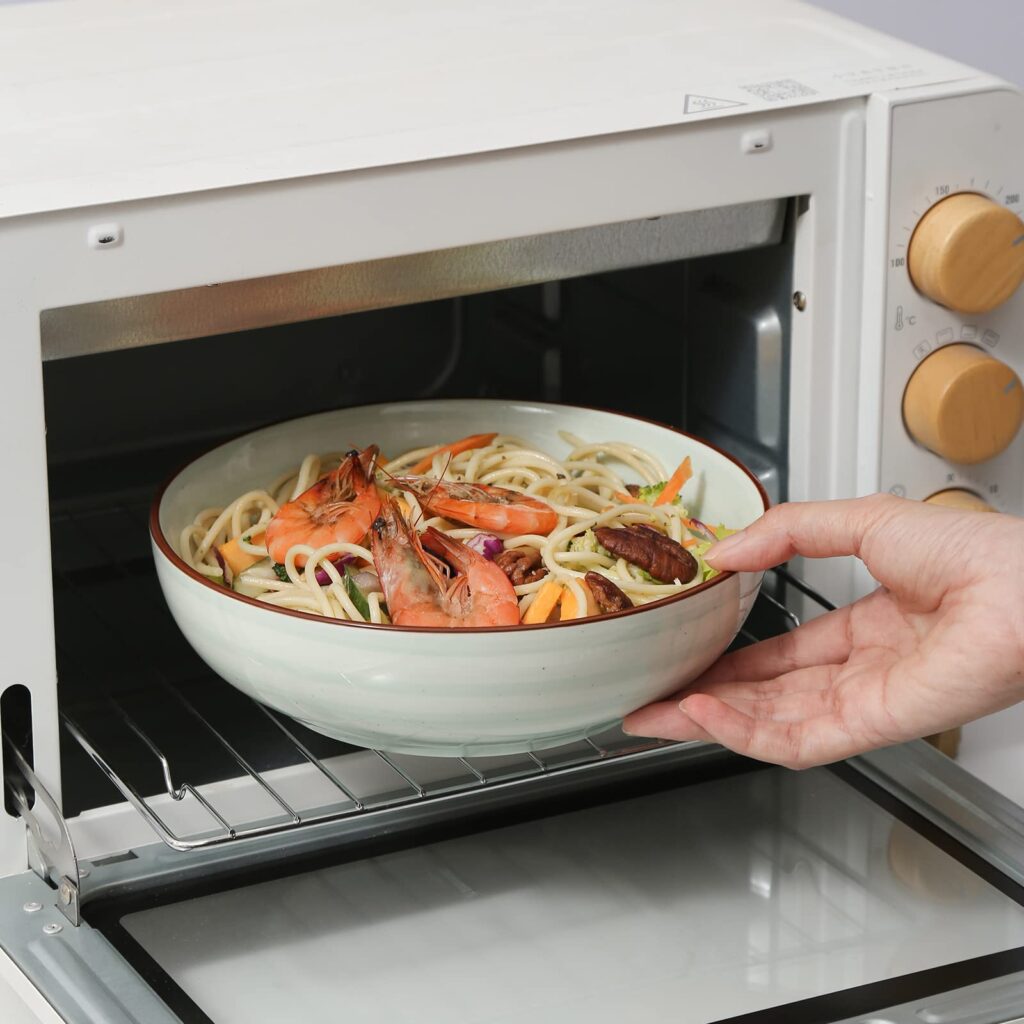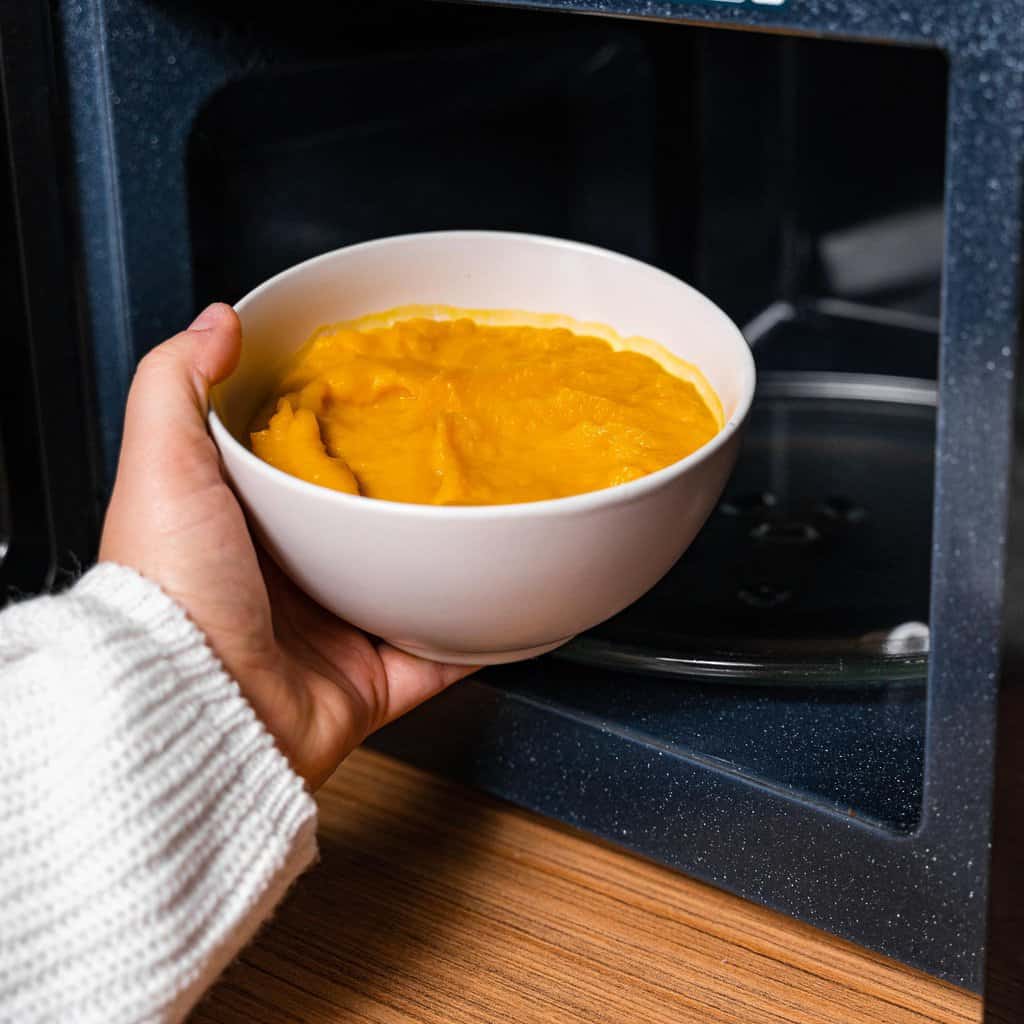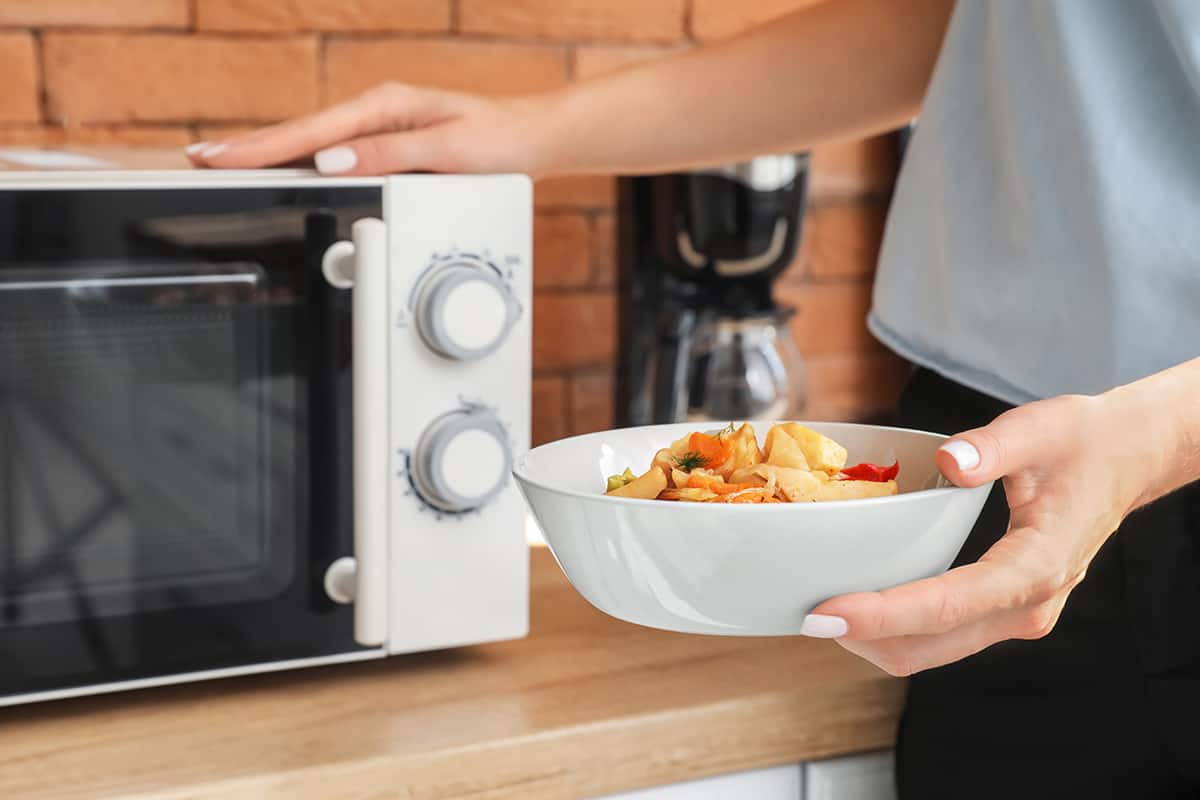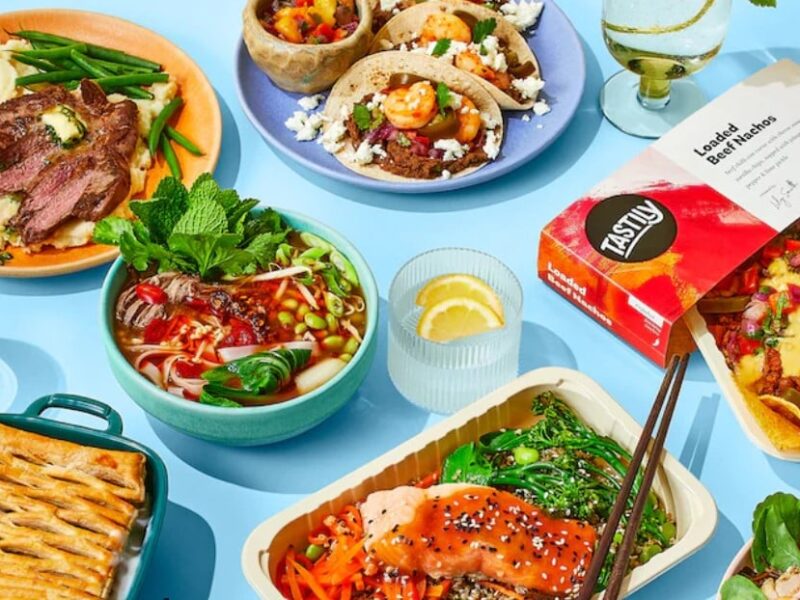Yes, you can put a bowl in the oven, but it depends on the type of bowl. Oven-safe materials include glass, ceramic, stainless steel, and certain types of plastic. For glass and ceramic bowls, ensure they are labeled as oven-safe and avoid sudden temperature changes.
Stainless steel bowls are generally safe, but check for heat-resistant markings. While some plastics can withstand low temperatures, it’s important to use bowls specifically designed for oven use.
However, always check the manufacturer’s guidelines and avoid placing wooden, melamine, or non-oven-safe plastic bowls in the oven. Following these guidelines ensures safe and successful oven cooking with your chosen bowls.
What Are the Best Types of Bowls for Baking and Cooking?

Picking the right bowls for baking and cooking is important for tasty and safe kitchen experiences. This guide looks at different materials like glass, ceramic, stainless steel, and plastic, giving helpful tips to help you choose the best bowls for your cooking adventures.
| Bowl Type | Pros | Cons | Concerns | Considerations |
| Glass Bowls | Oven-safe versatility | Shattering risk with temperature changes | Risk of shattering if exposed to extreme temperatures | Choose borosilicate glass; avoid sudden transitions |
| Ceramic Bowls | Excellent heat retention | Prone to cracking with rapid temperature changes | Thermal stress; choose oven-safe labeled bowls; | preheat slowly and avoid sudden temperature shifts |
| Stainless Steel Bowls | Durable and corrosion-resistant | Becomes extremely hot in the oven | Hot handling; check for heat-resistant markings | Use oven mitts; check for heat-resistant markings |
| Plastic Bowls | Lightweight and versatile | Not all are oven-safe | Melting and chemical release at high temperatures | Check for oven-safe labels; follow temperature limits; consider alternatives |
Can You Put Specific Bowls in the Oven?
Yes, you can put specific bowls in the oven. Oven-safe materials like glass, ceramic, and stainless steel suitable, but it’s important to check labels and follow safety guidelines to prevent breakage or damage.
Glass Bowls
Thermal Shock Prevention: Glass bowls are susceptible to thermal shock, which occurs when subjected to rapid temperature changes. To prevent breakage, avoid transferring a cold glass bowl directly into a hot oven. Gradual temperature changes, such as room temperature to a preheated oven, are safer.
Check Oven-Safe Labels: Before using a glass bowl in the oven, verify that it is labeled as oven-safe. Not all glass is suitable for high-temperature exposure.
Common Misconceptions
- All Glass is Oven-Safe: Contrary to common belief, not all glass can withstand oven temperatures. Always check for oven-safe labels to ensure the glass can handle the heat.
- Avoiding Extreme Changes: Another misconception is assuming glass is impervious to temperature changes. To prevent potential breakage, let glass bowls acclimate to room temperature before exposing them to extreme heat.
Ceramic Bowls
Oven-Safe Label Importance: Opt for ceramic bowls explicitly labeled as oven-safe. This indicates that the manufacturer has designed them to withstand the temperature variations encountered in an oven.
Temperature Sensitivity: Ceramic bowls can crack under extreme temperature changes. Slow preheating helps mitigate thermal stress and ensures the bowl’s longevity.
Tips for Oven Use
- Preheating Techniques: Preheat ceramic bowls gradually to minimize the risk of thermal shock. Avoid placing them directly on a hot stovetop or under a broiler.
- Avoiding Sudden Temperature Shifts: Sudden temperature changes, such as placing a hot ceramic bowl on a cold surface, should be avoided to prevent cracking.
Stainless Steel Bowls
Heat Resistance: Stainless steel bowls excel in heat resistance and are generally safe for oven use.
Safe Handling: When retrieving stainless steel bowls from the oven, use oven mitts to protect your hands from the high temperatures.
Advantages and Limitations:
- Advantages: Stainless steel bowls are durable, corrosion-resistant, and versatile for a range of kitchen tasks involving heat.
- Limitations: While they are excellent for durability, stainless steel bowls can become extremely hot during oven use. Exercise caution and use protective gear to avoid burns.
Plastic Bowls
Oven-Safe Labels: Not all plastic bowls are suitable for oven use. Look for explicit oven-safe labels on the bowls before using them for baking or cooking.
Temperature Limits: Adhere to the manufacturer’s recommended temperature limits to prevent melting and maintain food safety.
Alternatives for Oven Use
- Consider Other Materials: If a plastic bowl is not oven-safe, explore alternatives such as glass, ceramic, or stainless steel for high-temperature cooking tasks.
- Microwave-Safe Options: When in doubt about a plastic bowl’s oven suitability, opt for microwave-safe plastic for other heating needs.
How Should I Safely Use Silicone, Melamine, Wooden, Pyrex, and Glass Bowls?

Silicone Bowls
Silicone bowls are generally safe for oven use within specific temperature ranges. Check the manufacturer’s guidelines for the maximum temperature the bowl can withstand.
While silicone is flexible, avoid using sharp objects or utensils that may puncture or damage the bowl’s surface.
Practical Considerations
- Silicone bowls are known for their flexibility, making them suitable for easy storage. They are also lightweight and resistant to stains.
- Silicone has non-stick properties, making it easy to release food. However, it’s advisable to use cooking spray or a light coating of oil for certain recipes.
Melamine Bowls
Most melamine bowls are not designed for oven use. Using them in high-temperature environments can lead to warping, discoloration, or the release of harmful chemicals.
To ensure safety, refrain from using melamine bowls in the oven or microwave unless explicitly labeled as oven-safe.
Best Practices for Oven Use
- If using melamine in the oven, check for specific oven-safe labels. Only use bowls labeled as such to avoid potential hazards.
- If using melamine, limit oven use to low-temperature cooking to minimize the risk of damage.
Wooden Bowls
Wooden bowls are not suitable for oven use at high temperatures as wood can crack or burn.
Wood is sensitive to moisture. Avoid prolonged exposure to liquids, and never soak wooden bowls in water.
Alternatives for Heat Exposure
- Wooden bowls are ideal for serving salads, fruits, or cold dishes. Consider using them for tasks that don’t involve heat exposure.
- If you need to transfer hot food, let it cool slightly before placing it in a wooden bowl to prevent potential damage.
Pyrex and Glass Mixing Bowls
Pyrex glass is known for its oven-safe properties. However, there are variations, so always check the specific Pyrex product for its recommended oven temperature limits.
Pyrex is sensitive to extreme temperature changes, so avoid rapid transitions from hot to cold.
Glass Mixing Bowl Considerations
- Glass mixing bowls are versatile and suitable for various kitchen tasks, including baking and mixing.
- Glass mixing bowls can be used for both cold and hot mixtures, making them a convenient choice for a range of recipes.
How Can You Tell If A Bowl Is Oven Safe?
To tell a bowl is oven-safe can be done through several methods. First, check the bottom for a stamp indicating “oven safe” or a symbol resembling a small oven.
Alternatively, conduct a water test by placing a bowl in the oven at 400 degrees Fahrenheit for 30 minutes. If the bowl is too hot to touch, it’s not oven-safe if slightly warm, it likely is. However, if it cracks or breaks, it’s not suitable.
For added certainty, consult the manufacturer’s instructions, which typically provide guidance on oven safety.
FAQ
Can I put a porcelain bowl in the oven?
Yes, you can. Porcelain bowls are generally oven-safe. However, to avoid thermal shock, it’s advisable to check for specific markings or labels indicating their suitability for oven use.
Can I use a glass bowl in the oven?
Yes, glass bowls are typically oven-safe. Look for specific markings or labels on the bowl to ensure it can withstand the heat.
Are metal bowls oven-safe?
Yes, most metal bowls are oven-safe. However, it’s essential to check for heat-resistant markings and avoid using metal bowls with non-metallic elements like plastic handles.
Can I bake in a steel bowl?
Yes, you can bake in a steel bowl. Steel bowls are generally suitable for oven use, but ensure they don’t have non-metallic components that may not be oven-safe.
What bowls are not oven-safe?
Bowls made of materials like plastic or those with non-metallic embellishments may not be oven-safe. Always check for specific markings or labels.
Can I put a steel bowl in the microwave?
Yes, you can put a steel bowl in the microwave. However, avoid steel bowls with non-metallic elements, as they may not be suitable for microwave use.
Can we put stainless steel in the oven?
Yes, stainless steel is oven-safe. Ensure the stainless steel item doesn’t have non-metallic parts that may not be suitable for oven use.
How do I know if my bowl is microwave-safe?
Check for labels indicating “microwave-safe” on the bowl. If uncertain, test it by microwaving a bowl of water for a short time and checking for any changes in the bowl.
Can I put a glass bowl in the microwave?
Yes, you can put a glass bowl in the microwave. Glass is generally safe for microwave use, but ensure it doesn’t have metallic elements like gold or silver trims, as they may cause sparks.
Final words
Being aware of whether your bowl is oven-safe is key to successful and safe cooking. Look for explicit markings like “oven-safe” or oven symbols on the bowl. A quick water test and a thorough check of the manufacturer’s instructions provide additional certainty.
Following these steps ensures that you can confidently use your bowls in the oven, allowing you to enjoy cooking without worry. Remember, a little attention to these details goes a long way in making your kitchen experiences smooth and hassle-free.



